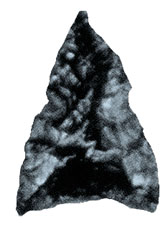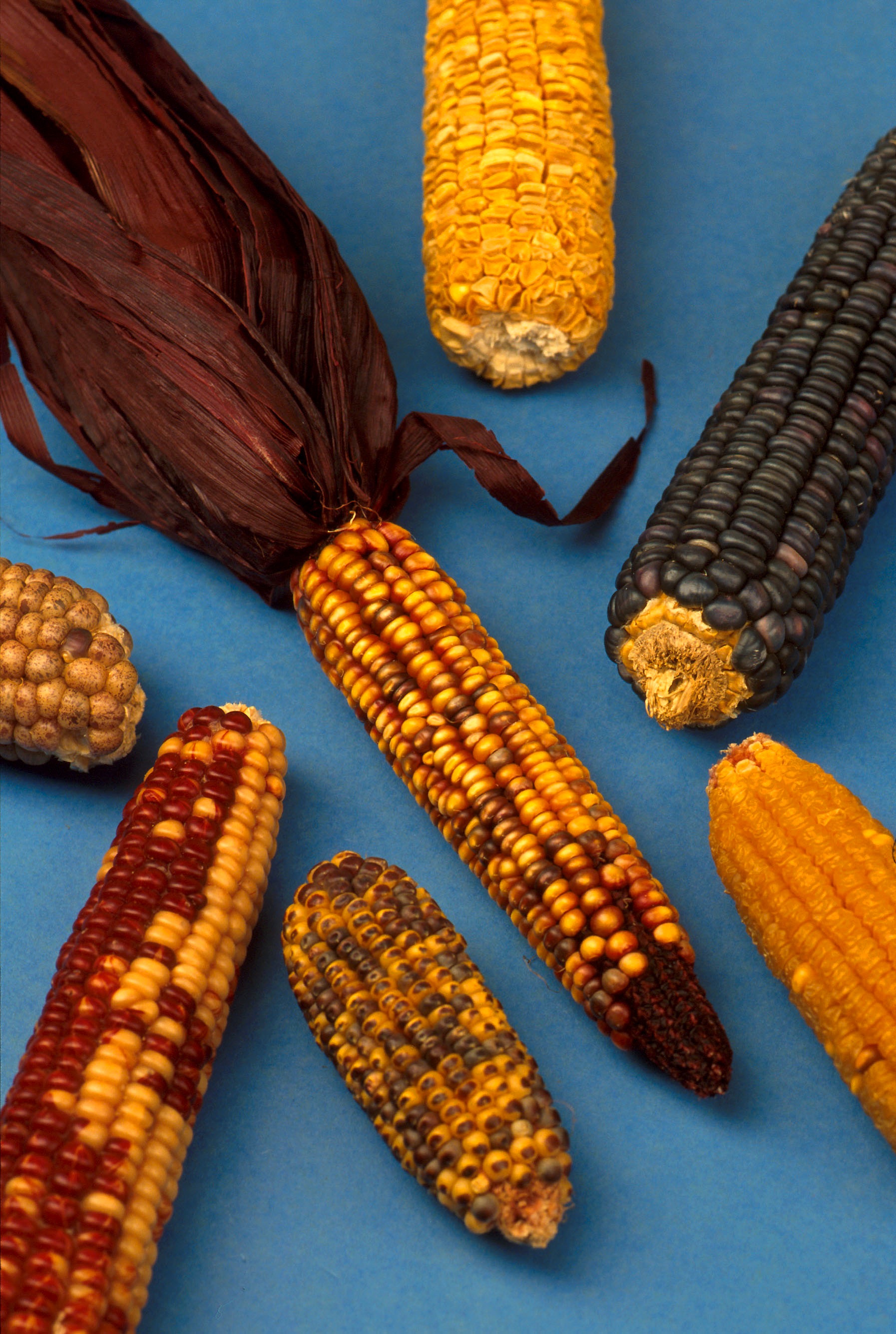|
Abejas Phase
The Abejas Phase, also known as the Late Archaic, is the fourth phase of the Tehuacán Valley of Mexico sequence, dating from 3825 to 2600 BC. Although the Tehuacán Valley sequence of phases has become one of the most famous phase sequences for any region in Mesoamerica, very few sites from these phases are known. Description Following the Ajuereado, El Riego, and the Coxcatlan phase, and followed by the Purron and Ajalpan phases, Abejas is the fourth of six phases. The Abejas phase population may have been twice as large as its preceding phase, Coxcatlan. This period is marked by the appearance of campsites and permanent settlements installed on river terraces, a noticeable decline in reliance on wild foods, domestication of plants (maize, beans, squash), and the appearance of long obsidian blades During this phase, agriculture supplies 25% of food requirements. Also during this phase, new material culture innovation arose such as split-stitch basketry, stone bowls and jars. S ... [...More Info...] [...Related Items...] OR: [Wikipedia] [Google] [Baidu] |
Tehuacán Valley Matorral
The Tehuacán Valley matorral is a xeric shrubland ecoregion, of the deserts and xeric shrublands biome, located in eastern Tehuacan, Central Mexico. Matorral is a Spanish language, Spanish word, along with ''tomillares'', for shrubland, thicket or bushes. The term is used alone for a Mediterranean climate ecosystem in Southern Europe. Geography The Tehuacán Valley matorral ecoregion occupies the Tehuacan Valley, Tehuacán Valley, Oriental Basin, and adjacent valleys, covering parts of the states of Tlaxcala, Puebla and Oaxaca. The valleys lie in the rain shadow of the surrounding mountain ranges, and are drier than the surrounding ecoregions. Adjacent ecoregions The Tehuacán Valley matorral is bounded by the Trans-Mexican Volcanic Belt pine-oak forests to the northwest, north, and northeast, the Sierra Madre de Oaxaca pine-oak forests to the east, and by the Balsas dry forests to the southeast, south, and southwest. Flora The Tehuacán Valley matorral is a center of plan ... [...More Info...] [...Related Items...] OR: [Wikipedia] [Google] [Baidu] |
Mesoamerica
Mesoamerica is a historical region and cultural area in southern North America and most of Central America. It extends from approximately central Mexico through Belize, Guatemala, El Salvador, Honduras, Nicaragua, and northern Costa Rica. Within this region pre-Columbian societies flourished for more than 3,000 years before the Spanish colonization of the Americas. Mesoamerica was the site of two of the most profound historical transformations in world history: primary urban generation, and the formation of New World cultures out of the long encounters among indigenous, European, African and Asian cultures. In the 16th century, Eurasian diseases such as smallpox and measles, which were endemic among the colonists but new to North America, caused the deaths of upwards of 90% of the indigenous people, resulting in great losses to their societies and cultures. Mesoamerica is one of the five areas in the world where ancient civilization arose independently (see cradle of civ ... [...More Info...] [...Related Items...] OR: [Wikipedia] [Google] [Baidu] |
El Riego Phase
The El Riego phase is a Mexican archaeological period in the Tehuacan Valley Sequence that came to pass during the early part of the Archaic period in the Americas. The El Riego phase is the second period in the sequence; preceding it was the Ajuereado phase, and the Coxcatlan phase came later. Dating for the El Riego phase differs slightly from source to source, it has been said to have occurred from as wide a span as 8650 - 5700 BCEvans, Susan Toby (2008). "Ancient Mexico & Central America: Archaeology and Culture History", p. 86. Thames & Hudson Ltd., United States of America. to as narrow as 6800 - 5000 BC.Nance, Roger C. (1992). "The Archaeology of La Calsada: A Rockshelter in the Sierra Madre Oriental, Mexico", p. 118-121. University of Texas Press, Austin, Texas. Retrieved Oct. 15, 2011. Tehuacan Valley Sequence The Tehuacan Valley Sequence was a project directed by Richard MacNeish which involved an archaeological survey of the Tehuacan Valley and excavations at various ... [...More Info...] [...Related Items...] OR: [Wikipedia] [Google] [Baidu] |
Obsidian Use In Mesoamerica
Obsidian is a naturally formed volcanic glass that was an important part of the material culture of Pre-Columbian Mesoamerica. Obsidian was a highly integrated part of daily and ritual life, and its widespread and varied use may be a significant contributor to Mesoamerica's lack of metallurgy. Lithic and contextual analysis of obsidian, including source studies, are important components of archaeological studies of past Mesoamerican cultures and inform scholars on economy, technological organization, long-distance trade, ritual organization, and socio-cultural structure. Production techniques Due to its glassy internal structure, obsidian is relatively easy to work, as it breaks in very predictable and controlled ways via conchoidal fracturing. This contributed to its prolific use throughout Mesoamerica. It is obtained by either quarrying source sites or in nodule form from riverbeds or fractured outcrops. Following the removal of cortex (when applicable), bifacial, unifac ... [...More Info...] [...Related Items...] OR: [Wikipedia] [Google] [Baidu] |
Agriculture In Mesoamerica
Agriculture in Mesoamerica dates to the Archaic period of Mesoamerican chronology (8000–2000 BC). At the beginning of the Archaic period, the Early Hunters of the late Pleistocene era (50,000–10,000 BC) led nomadic lifestyles, relying on hunting and gathering for sustenance. However, the nomadic lifestyle that dominated the late Pleistocene and the early Archaic slowly transitioned into a more sedentary lifestyle as the hunter gatherer micro-bands in the region began to cultivate wild plants. The cultivation of these plants provided security to the Mesoamericans, allowing them to increase surplus of "starvation foods" near seasonal camps; this surplus could be utilized when hunting was bad, during times of drought, and when resources were low. The cultivation of plants could have been started purposefully, or by accident. The former could have been done by bringing a wild plant closer to a camp site, or to a frequented area, so it was easier access and collect. The latter co ... [...More Info...] [...Related Items...] OR: [Wikipedia] [Google] [Baidu] |
Basketry
Basket weaving (also basketry or basket making) is the process of weaving or sewing pliable materials into three-dimensional artifacts, such as baskets, mats, mesh bags or even furniture. Craftspeople and artists specialized in making baskets may be known as basket makers and basket weavers. Basket weaving is also a rural craft. Basketry is made from a variety of fibrous or pliable materials—anything that will bend and form a shape. Examples include pine, straw, willow, oak, wisteria, forsythia, vines, stems, animal hair, hide, grasses, thread, and fine wooden splints. There are many applications for basketry, from simple mats to hot air balloon gondolas. Many Indigenous peoples are renowned for their basket-weaving techniques. History While basket weaving is one of the widest spread crafts in the history of any human civilization, it is hard to say just how old the craft is, because natural materials like wood, grass, and animal remains decay naturally and constantly. So ... [...More Info...] [...Related Items...] OR: [Wikipedia] [Google] [Baidu] |
Coxcatlan Cave
Coxcatlan Cave is a Mesoamerican archaeological site in the Tehuacán Valley, State of Puebla, Mexico. It was discovered by Richard MacNeish in the 1960s during a survey of the Tehuacán Valley. It was the initial appearance of three domesticated plants in the Tehuacan Valley (Puebla, Mexico) that allowed an evaluation to be done again of the overall temporal context of the plant domestication in Mexico. In addition to plants, Coxcatlan Cave also provided nearly 75 percent of the classified stone tools from excavation.Trigger, Bruce G., Wilcomb E. Washburn, and Richard E. W. Adams. The Cambridge History of the Native Peoples of the Americas. Cambridge, England: Cambridge UP, 1996. Print. Overview It was used over a span of 10,000 years, mostly during the Archaic period, as a shelter and gathering place during the rainy season for groups of foragers as large as 25–30 individuals. It is one of a collection of cave sites in the Tehuacan Valley. Each have similar archaeobotanica ... [...More Info...] [...Related Items...] OR: [Wikipedia] [Google] [Baidu] |
Chilac
San Gabriel Chilac is the municipal seat of San Gabriel Chilac Municipality in the Mexican state of Puebla. It is located near the city of Tehuacán "By faith and hope" , , image_map = , mapsize = 300 px , map_caption = Location of Tehuacán within the state of Puebla. , image_map1 = Puebla en México.svg , mapsize1 = 300 px , ma .... Populated places in Puebla {{Puebla-geo-stub ... [...More Info...] [...Related Items...] OR: [Wikipedia] [Google] [Baidu] |
Cueva Blanca
Cuevas or Cueva (Spanish for "''cave(s)''") may refer to: Places * Cueva de Ágreda, a municipality located in the province of Soria, Castile and León, Spain * Cuevas Bajas, a town and municipality in the province of Málaga, part of the autonomous community of Andalusia in southern Spain * Cuevas de Almudén, a town in the province of Teruel, Aragón, Spain * Cuevas del Almanzora, a municipality of Almería province, in the autonomous community of Andalusia, Spain * Cuevas del Becerro, a town and municipality in the province of Málaga, part of the autonomous community of Andalusia in southern Spain * Cuevas del Valle, a municipality in the province of Ávila, Castile and León, Spain * Cuevas de Provanco, a municipality in the province of Segovia, Castile and León, Spain * Cuevas de San Clemente, a municipality in the province of Burgos, Castile and León, Spain * Cuevas de San Marcos, a town and municipality in the province of Málaga * Cuevas de Vera, a town in south-e ... [...More Info...] [...Related Items...] OR: [Wikipedia] [Google] [Baidu] |
Dogs In Mesoamerica
Dogs in Mesoamerica of various sorts are known to have existed in prehispanic times as shown by archaeological and iconographical sources, and the testimonies of the 16th-century Spaniards. In the Central Mexican area, there were three races: the medium-sized furred dog ('' itzcuintli''), the medium-sized hairless dog (''xoloitzcuintli''), and the short-legged, ('' tlalchichi'') based in Colima and now extinct. Apart from other, more obvious functions, dogs were also used for food (10% of all consumed meat in Teotihuacan) and ritual sacrifice. Maya used domesticated dogs The ancient Maya, a group of people who lived throughout southern Mexico and Central America, used domesticated dogs on a daily basis as a food source, hunting aide, and an element in religious and spiritual rituals. Archaeological evidence Remains of dogs have been found in sites dating from the Preclassic through the Postclassic periods of Mesoamerica dating as early as 1200 BCE. These remains have appeared i ... [...More Info...] [...Related Items...] OR: [Wikipedia] [Google] [Baidu] |



